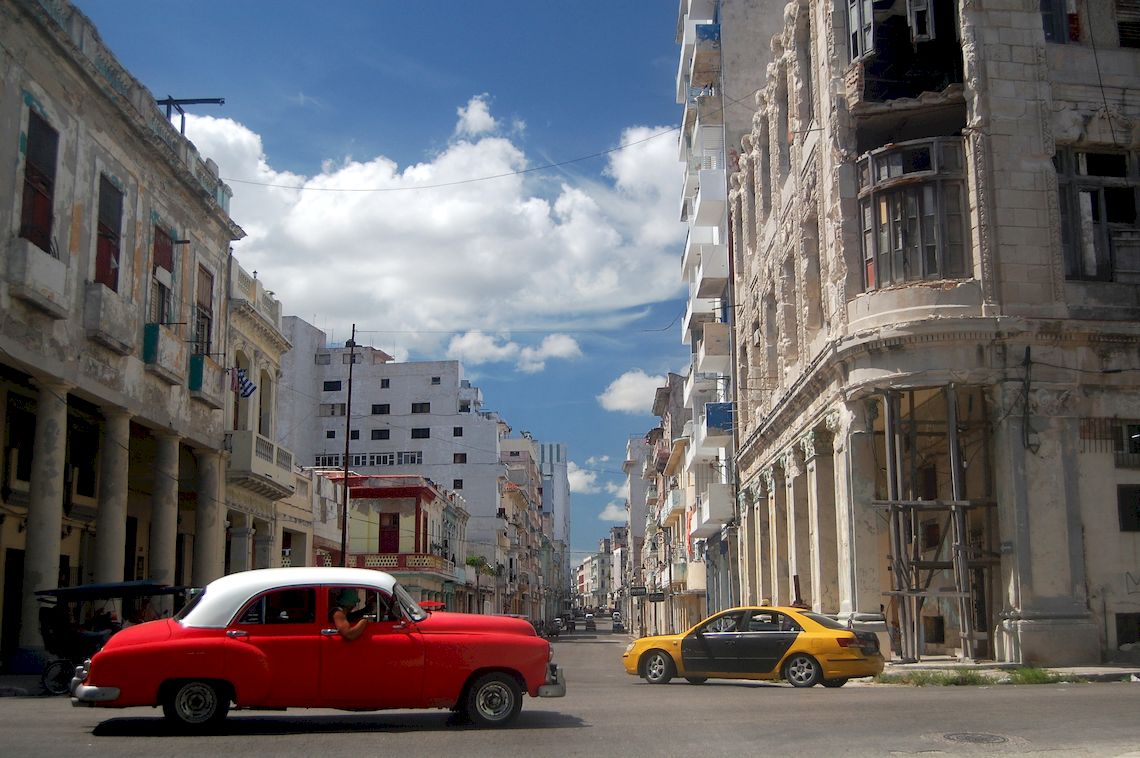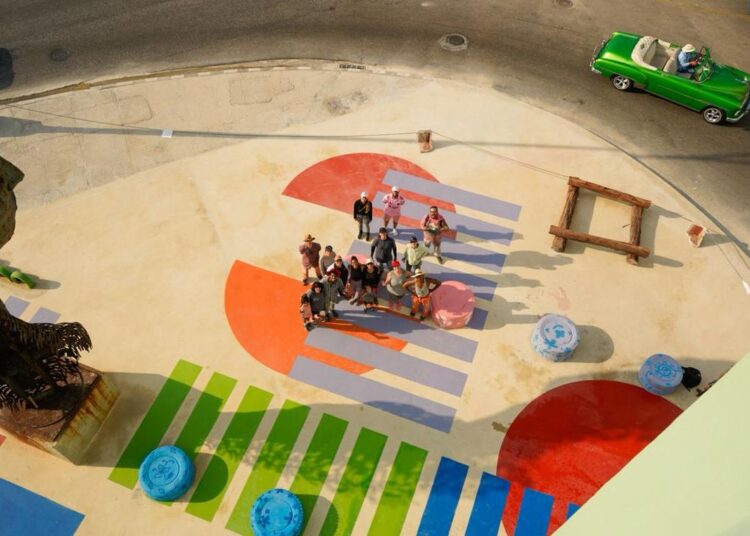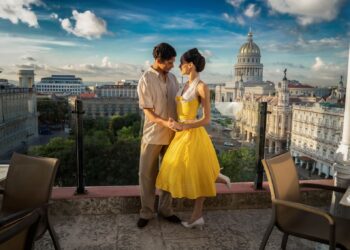“La ciudad se derrumba y yo cantando” (The city is collapsing and here I am singing).” For more than half a century, singer-songwriter Silvio Rodríguez has been bequeathing that disruptive image that appears in one of his classics, “Te doy una canción.” Today, there are barely any metaphorical traces in the expression; it is an augmented reality, with partial or total collapses that creep into the daily news of Havana residents.
At the corner where the Malecón merges with Avenida Italia — that artery that people, in everyday speech, simply know as Galiano, through its colonial DNA — one of its buildings was licking its wounds.
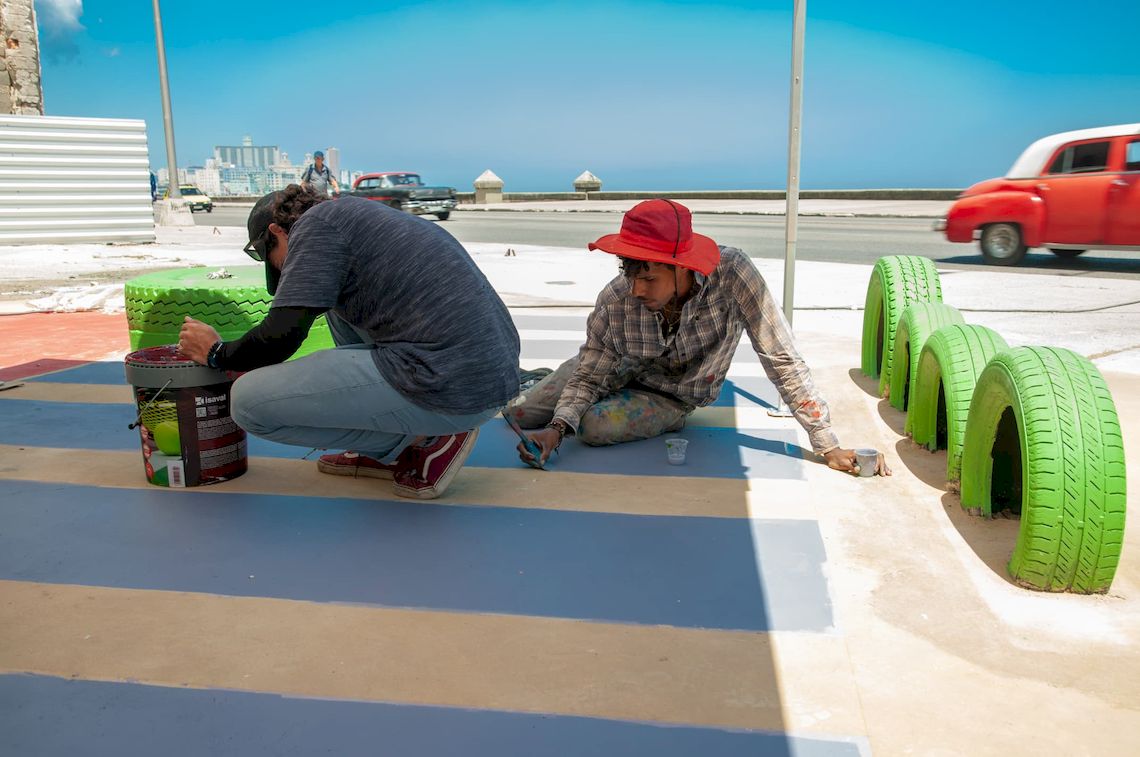
Mass Construcción SURL, amidst gray and black waters
“The Malecón and Galiano junction plays a decisive role in the avenue’s operation. It’s like a starting point for a journey or a final destination in the flow of activities on the avenue… It’s also part of the city facade that flows along Malecón Avenue,” architect Eddy Jesús Ramos Miranda, a partner at Mass Construcción SURL, told OnCuba via WhatsApp.
According to the expert, the main challenge was to rehabilitate the physical and environmental condition of the concrete platform where the sculpture Primavera, by artist Rafael San Juan, sits, which had become a sinkhole due to deterioration and neglect.
The area was “contaminated with black and gray waters from neighboring buildings, which ended up being dumped there due to problems with the domestic infrastructure.” In turn, the pavement showed advanced erosion “due to the direct action of saltpeter and sea spray.”
As if that weren’t enough, the architectural situation was further complicated because in the perimeter there were “facades of collapsed buildings; which despite being fenced by the direct action of the Centro Habana municipal government, pose a risk of potential collapse.”
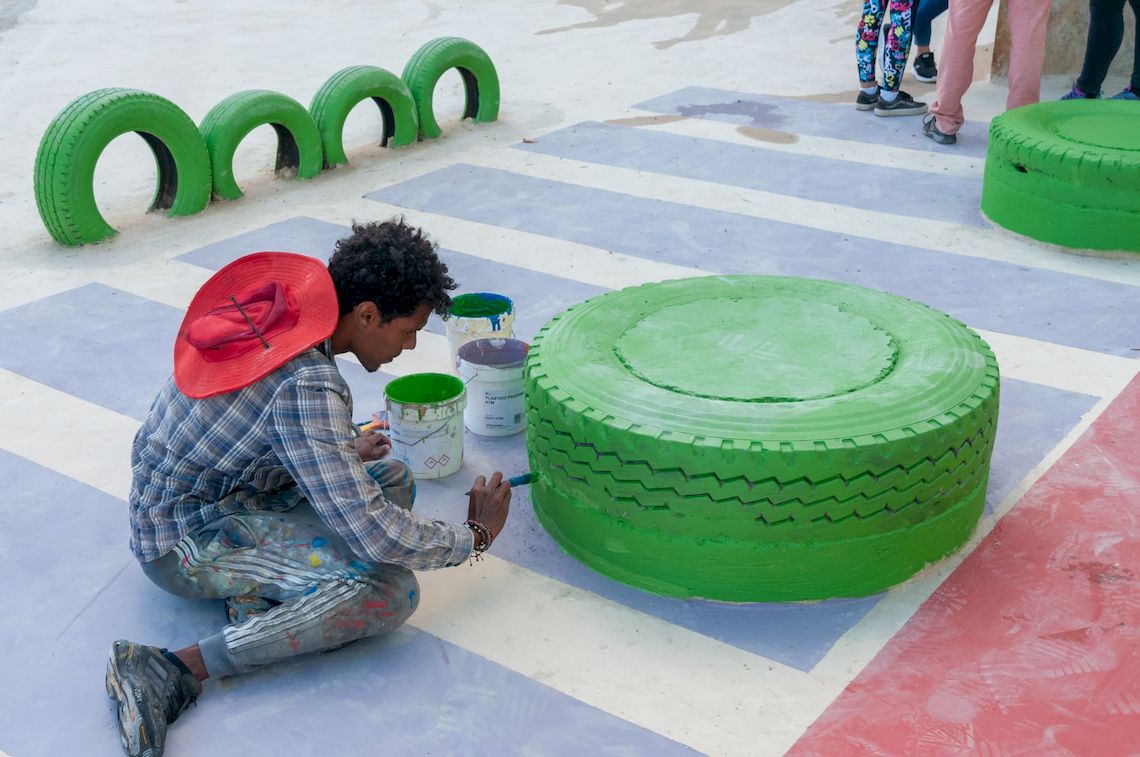
The MSME Mass Construccion’s priority list then included “resolving the main sanitary network of the adjacent buildings with a new installation connected to the city’s sewer collection system.”
Then came the laying of the foundations and the shaping of the bases for the furniture, using recycled resources and, finally, explains Ramos Miranda, the “leveling of the concrete platform to ensure a polished surface on which walkable paint could later be applied.”
For this architect, “Italian cooperation, through its staff, was the architect and main responsible entity for the good results.” He also highlighted the team of specialists from the independent firm Ad Urbis Arquitectos, which “was decisive in the implementation of this project,” and the institutional support of the city.
Now, here, in this border area between the sea and the city, a project comes to life that seems to encapsulate the desire of a Cuba that resists, reinvents itself and attempts a saving transition: the Avenida Italia project, promoted and financed by Italian cooperation, navigating between local bureaucracy and the unfailing creativity of the Cuban people.
In search of youthful pulses
“Avenida Italia is not just a thoroughfare; it’s a confluence of memories, undreamed stories and urban pulses,” says Aymé Plasencia Pons, technical assistant for the Culture and Local Development sector of the Italian Agency for Development Cooperation (AICS), with a passionate voice.
From day one, the initiative aimed to launch a series of workshops that would not be mere passing courses that served as curricular additions, but true laboratories for creation and action.
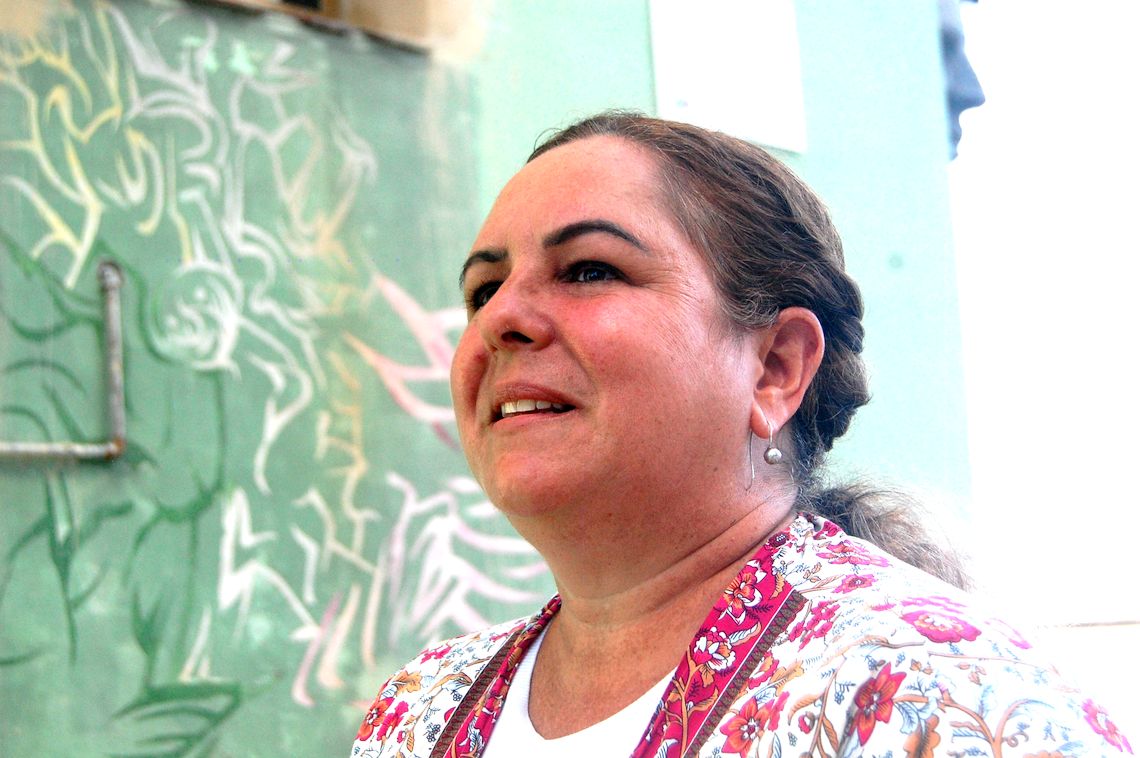
The idea was as clear as it was ecumenical: to bring together professional and creative young people from Centro Habana and the city in general, with diverse profiles ranging from artists, historians, musicians, architects, designers to physicians and journalists, so that with their energy and knowledge they could generate concrete products (from poetry to fashion design) that could fuel cultural and urban transformation.
“We wanted something more than a workshop,” explains Plasencia Pons, a sociologist by training.
The goal? For participants to confront their life and professional experiences with new tools that would serve to create quality communication products. Thus, the décima began as a historical collection, progressed toward the graphic novel, then came circular fashion — which captures the essence and reuses used clothing — and, finally, a tactical urban planning laboratory that submitted proposals for transforming Avenida Italia based on its public spaces.
The décimas, conceived as short, popular poems, with a Hispanic tradition on the island dating back to the 18th century, were the first step in this recovery of urban history: “They served to tell the hidden history of that avenue, understanding the paradoxes of its name, the oral tradition and the social background,” Plasencia noted in a conversation with OnCuba in front of a calm morning sea.
Likewise, “one of the boldest initiatives was the campaign to collect approximately 500 used garments, which served as input for designers and young entrepreneurs to create new pieces inspired by the characters in the graphic novel. Some garments participated in Torino Fashion Week and received recognition,” the AICS official added.
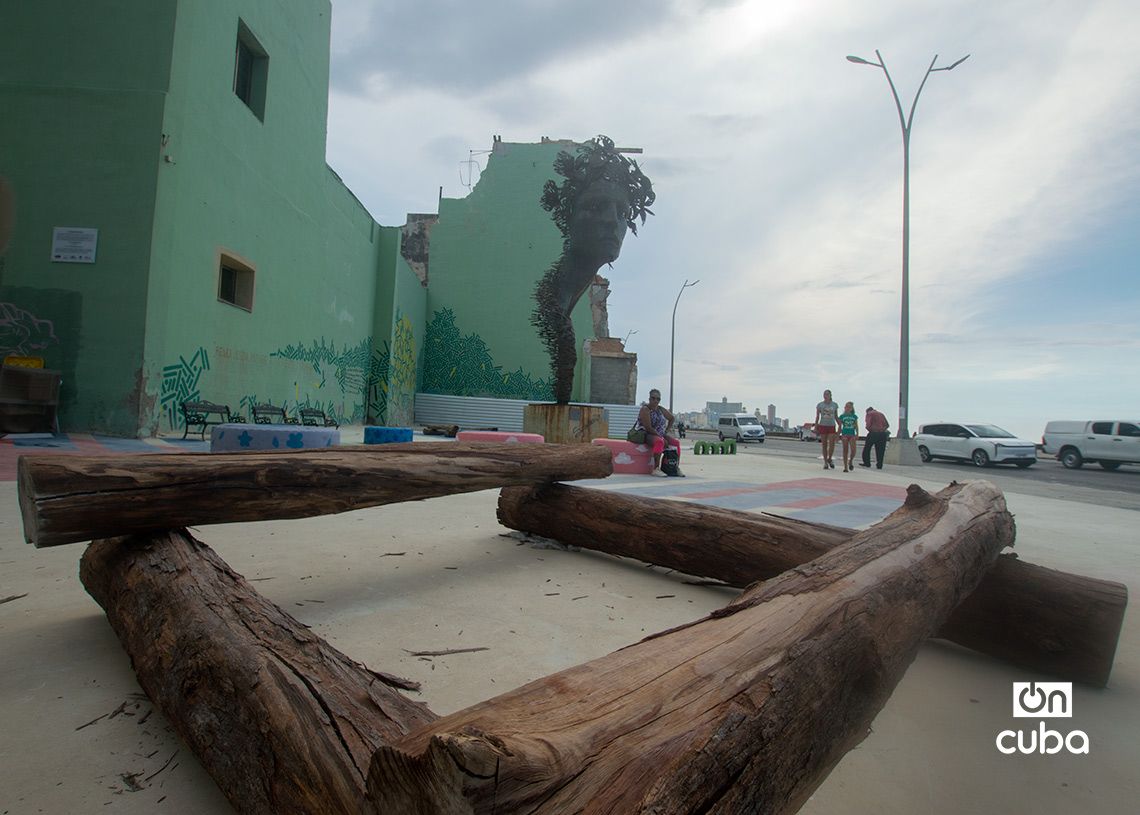
A necessary digression
AICS stands for “Italian Agency for Development Cooperation” (Agenzia Italiana per la Cooperazione allo Sviluppo). It is the public entity of the Italian government responsible for promoting and managing international cooperation for development, focused on eradicating poverty, reducing inequalities, protecting human rights, promoting health, education and environmental sustainability.
It was created by Italian Law 125/2014 and began operating in 2016, based in Rome and with offices around the world, to implement and supervise development projects in partner countries, such as Cuba, whose office was opened in 2017.
However, Italian cooperation on the island dates back more than 30 years, with support programs in culture and heritage, as well as sustainable agriculture, a line previously developed by the Ministry of Foreign Affairs.
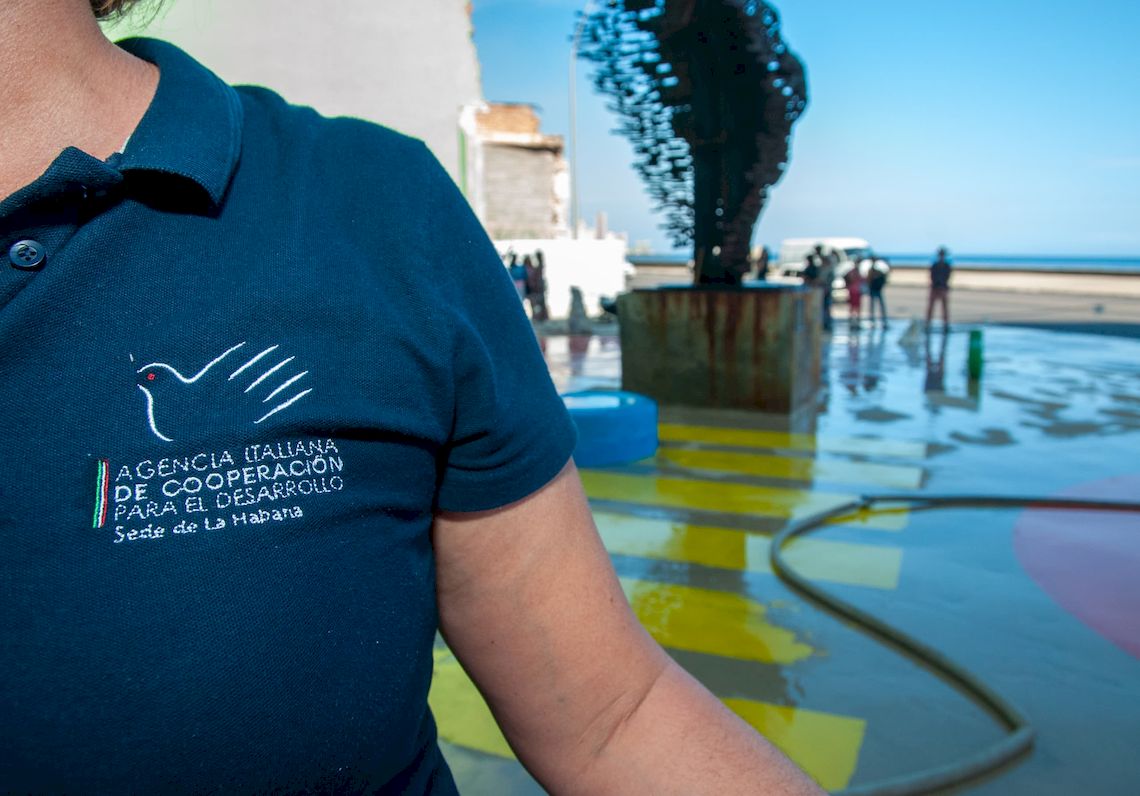
Art and action: the city as a canvas
Just as fundamental as the historical restoration is the artistic drive that has shaped the intervention. Javier Agudo Durán, visual artist, muralist and coordinator of the Arte 92 community project, enthusiastically joined the lab.
“I’ve been working in public spaces with murals, graffiti and performances for more than 10 years,” Javier tells OnCuba. “But this tactical urbanism workshop gave me methodological tools to complement my creative side. Tactical urbanism is the magic of transforming space with few resources, seeking to transform it into a place of socialization and belonging.”
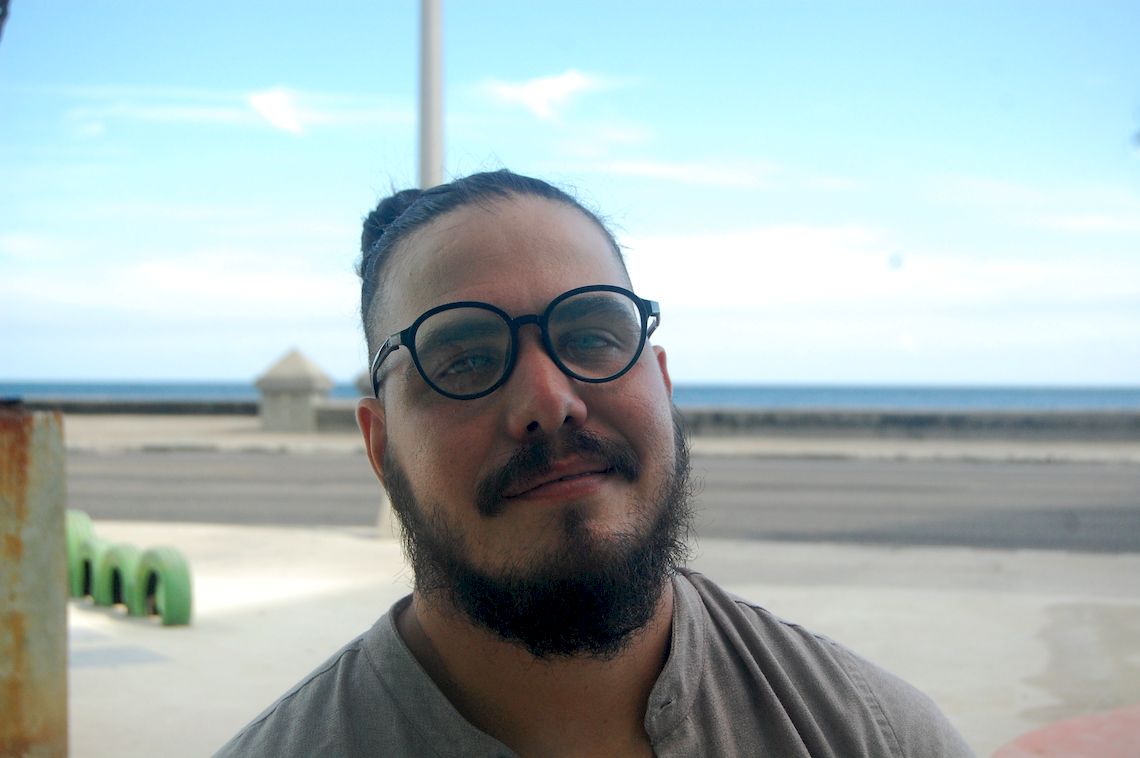
His experience in this Renaissance-inspired workshop was nurtured by encounters with professionals from different fields: architects, geographers, designers, musicians, historians and visual artists. In a kind of live workshop, Agudo Durán then taught his students how to measure spaces, combine colors that also work from the air and create a landmark at the intersection of the Malecón and Avenida Italia that, although ephemeral, already has a palpable impact.
“Before, on this corner, there was a permanent puddle, garbage, unsafe nightlife.… Now people sit here and talk. That, for me, is a triumph,” Javier proudly asserts. “And we know the intervention must be repeated, because the Malecón is an aggressive place: traffic, humidity, sea spray, time…everything wears down.”
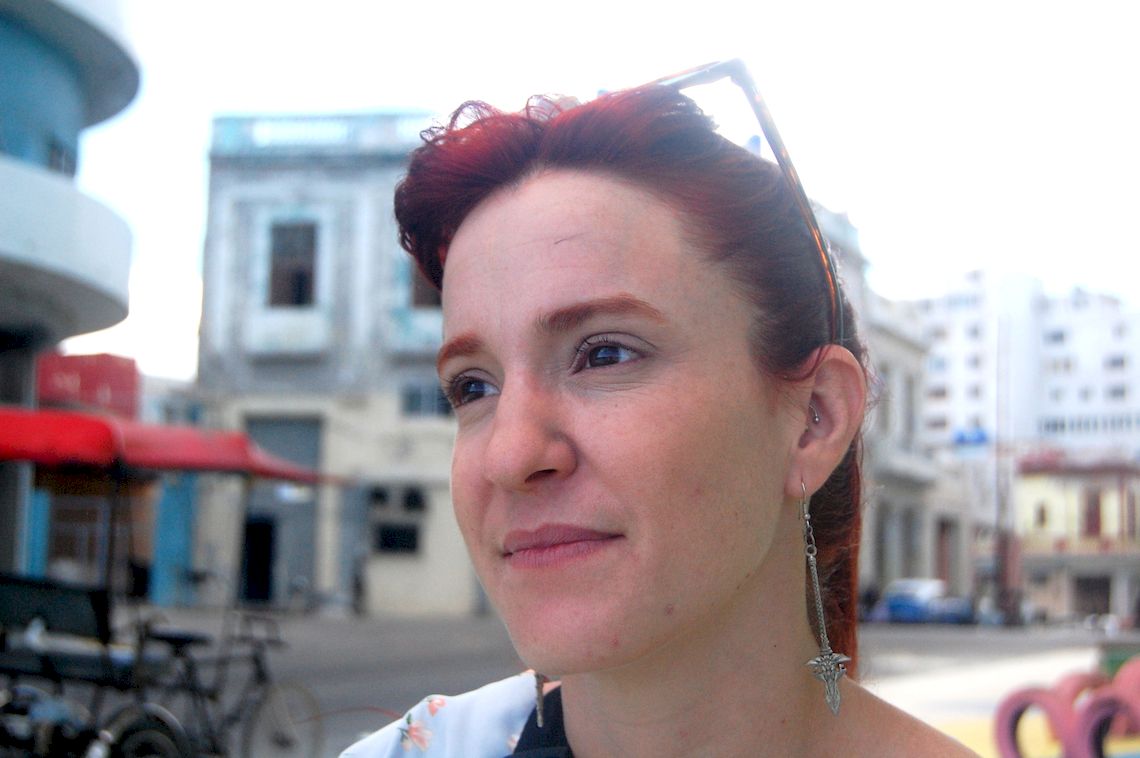
KMLM: conscious fashion and architecture based on sustainability
In this melting pot of proposals and actions, the figure of Karla María Lemus Mesa emerges, a 29-year-old architect and sustainable fashion entrepreneur with her textile recycling project Ákares Shopitrapo, in Centro Habana.
“Architecture and fashion come together in my work based on a conscious consumption perspective. I learned in the textile recycling workshop to repurpose garments, extend their useful life and apply concepts of environmental sustainability,” explains Karla, originally from Pinar del Río.
Her fascination with urban planning also led her to participate in a workshop taught by renowned Cuban architects who integrated methodologies applied to urban intervention and the use of endogenous resources to address the local reality, plagued by basic deficiencies.
“We presented proposals to revive Avenida Italia based on a multidisciplinary perspective: accessibility, a gender perspective, inclusion of informal collectors and vendors and, above all, reclaiming public space to create community. The idea that inspired me was a community garden, to provide the greenery that many lack in their homes,” she says confidently.
“Many live in apartments without space for plants, and the garden would be a natural space for the community, with the possibility of growing and monetizing plants, although it would require more resources.”
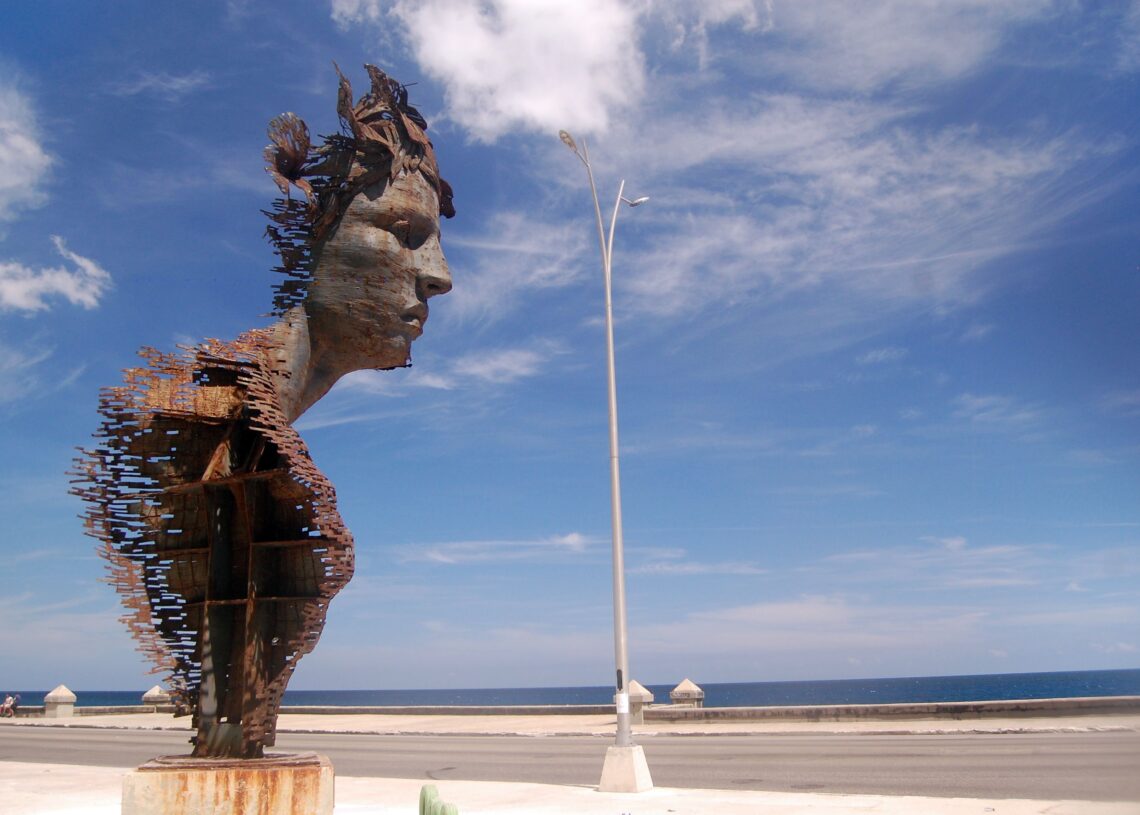
Have you had other experiences related to textile recycling?
Yes, I received a two-year scholarship in creative textile recycling spaces and presented two fashion shows, one called Cuquitas and another recently titled Alteradas, which showcased garments manipulated in Cuba from recycled models.
In the face of urban precariousness, how do you see the possibility of change through reusability?
As something positive. Much can be achieved with few resources by recycling discarded materials, such as tires or logs. If we combine these efforts, many spaces in Centro Habana could be rehabilitated and the quality of urban life improved.
Do you know of other interventions, such as in Fe del Valle Park, on San Rafael Boulevard?
Yes, although there was more investment, the environment remains socially hostile. I believe that community projects that involve young people can help transform these spaces.
Do you think projects like this can change lives?
Yes, I think of the broken window theory: if a space is neglected, it deteriorates further; but if it is repaired and maintained, people take better care of that place and the environment improves. It’s a matter of social awareness that these projects can promote.
Do you expect your garden project to come to fruition, or will it sleep the eternal sleep?
There are many projects under study that may be “dormant” for a while, but not forever. For example, my thesis was on zero-energy buildings, but they have not yet been implemented in Cuban reality.
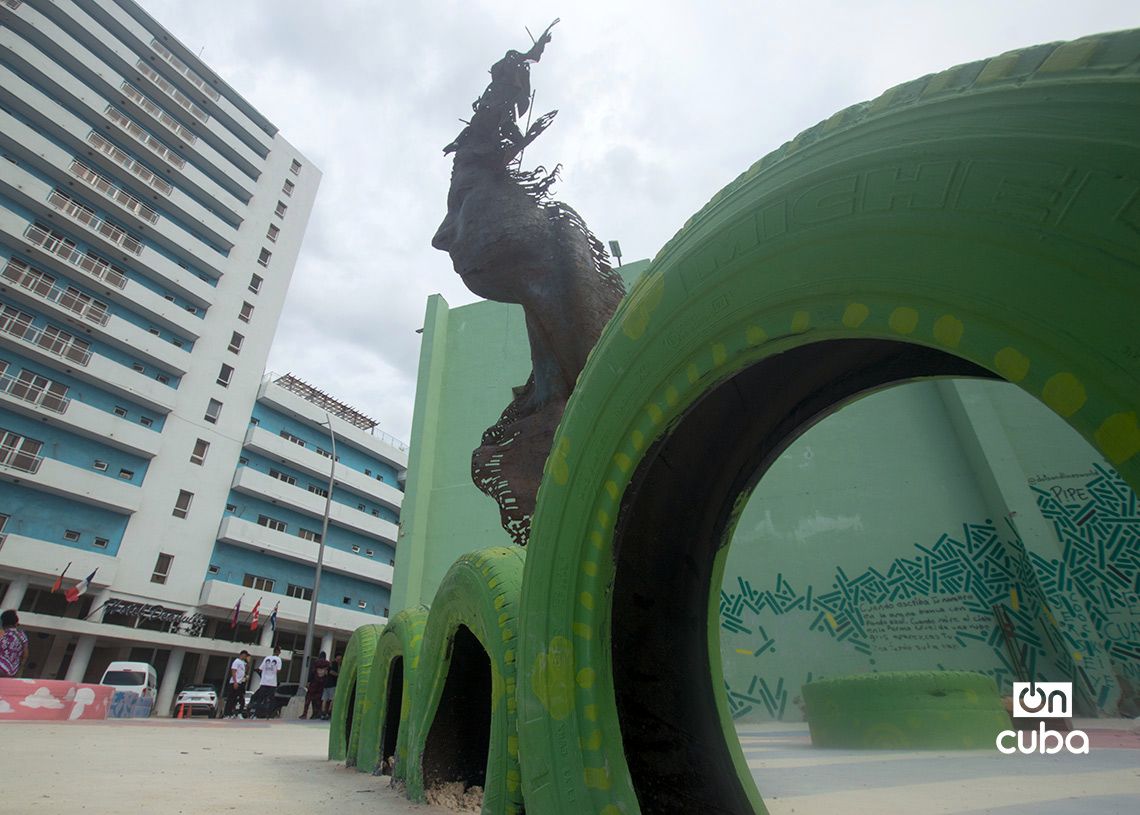
Obstacles and institutional alliance: dancing to the beat of bureaucracy
If so much creativity doesn’t find an institutional outlet, it falls prey to being left in the void. In Havana, authority over the Malecón is not a game of cards: the Historian’s Office holds the keys to any initiative and municipal management frequently intersects. For a project to navigate this network of competencies it requires not only persistence, but also diplomatic talent and negotiating skills to reach agreements.
“We persisted for four months in the struggle for permits and paperwork,” Aymé recounts with aplomb and a hint of joy and self-realization. “We visited the Master Plan a thousand times. But we also found sensitivity in key decision-makers: the mayor of Centro Habana, Michel Ferrer, and Daylis Rivero Vega, a territorial foreign trade specialist for the Centro Habana government, “very responsible and committed.… Both were our support. They saw in this idea a real impact for the community.”
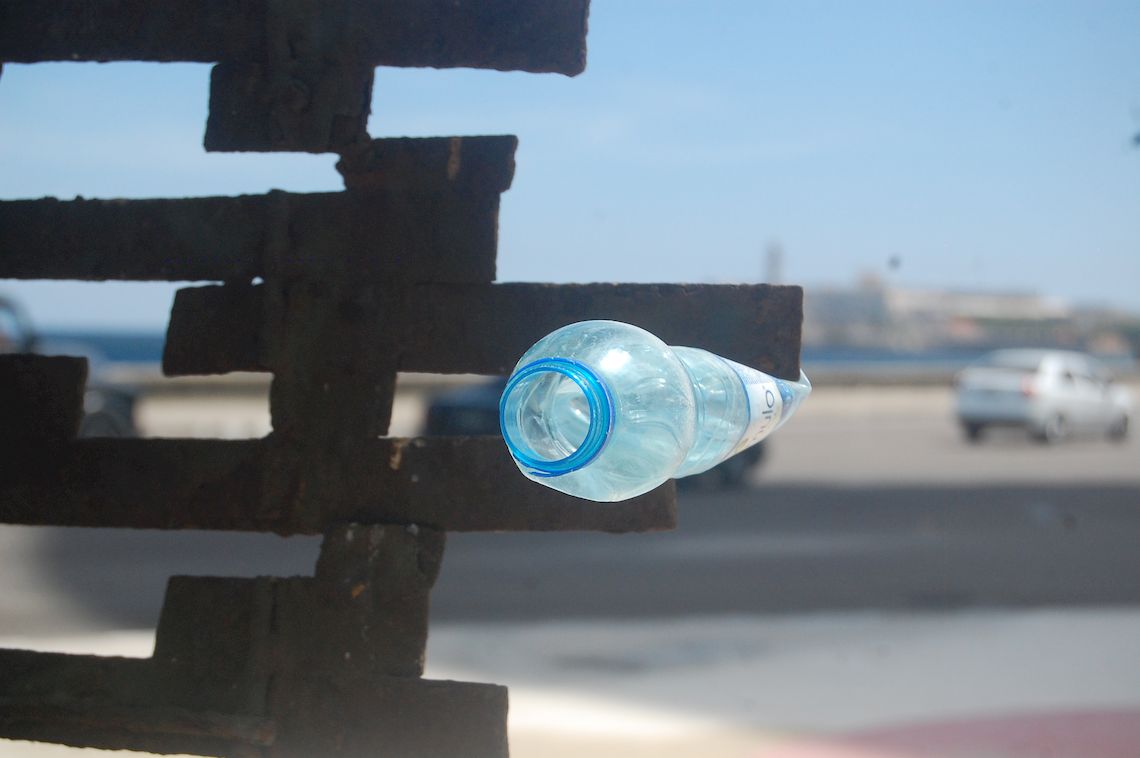
The participation of the private sector was essential, as small and medium-sized construction companies are one of the fastest-growing subsectors on the island.
“Mass Construcción is a young, inclusive enterprise that employs deaf people and, to that end, some of its members learned sign language,” Aymé praises. “We signed formal contracts and they did the hard work: cleaning, leveling and fixing a drain that no one else would have taken care of, with the help of the artist Rafael San Juan and the neighbors.”
Thus, amidst the complex web of decrees, institutions and agreements, Italian cooperation was inserted not only with funding, but also with the methodological structure and the commitment to ensuring that the projects were useful and replicable.
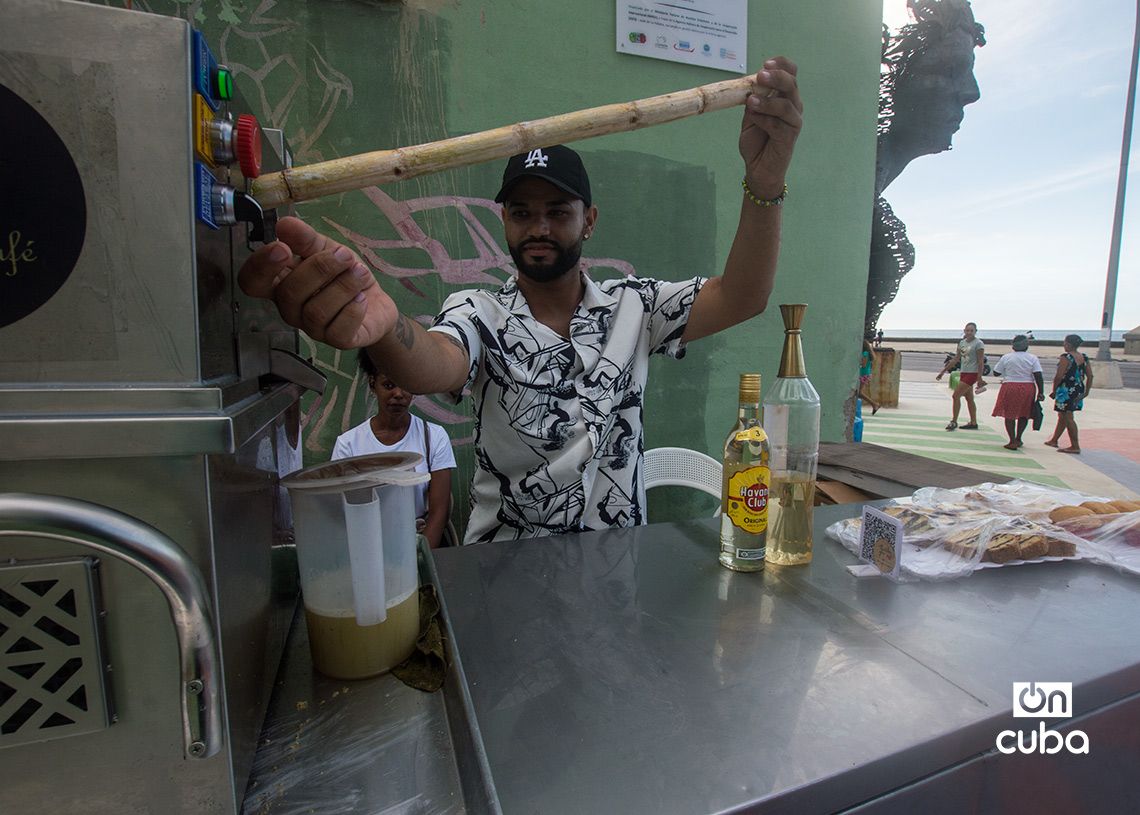
Emigration, a stumbling block in continuity
The dynamics of the project served as a small mirror that reflected the vicissitudes of 21st-century Cuba. Thus, the phenomenon of emigration impacted the continuity of the creative teams.
“Of the young people trained in the workshops, several have already left the country, many from the circular fashion segment,” Aymé acknowledges. “But others stay, committed, seeking to transform their environment. What we want is for that energy not to be lost. For it to translate into real public policies, because the polycrisis is overwhelming, but it also encourages resilience.”
This commitment is reflected in the final assessment she offers, a summary with a human face, a gender perspective and concrete figures: “We have trained around 100 young people, mostly women, and several repeated workshops. They all remain connected, still want to leave their mark. That is very valuable to us,” the sociologist states.
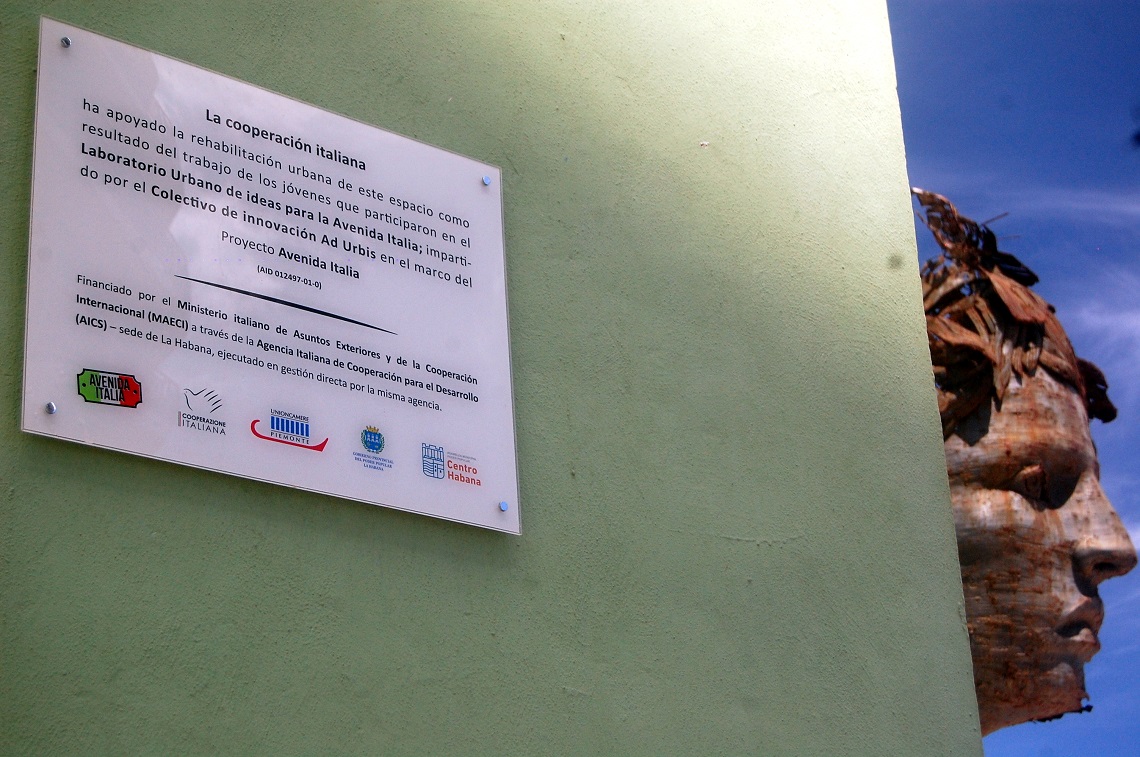
Avenida Italia, living laboratory
What is being written almost daily on that corner is not just an aesthetic intervention. It’s a true urban laboratory that combines tactical urbanism (rapid, low-cost interventions with high social impact) with direct community participation and the integration of recycled, heritage and functional materials.
Painted truck tires, stacked in pairs, serve as comfortable seats for those enjoying the small park, like one of its users, whom we’ll call Armando.
“Well, I think it’s a very healthy place. People especially sit, like I’m doing now, and unwind, look at the sea, the environment and get some fresh air. I think it’s a good project.”
Do you think the experience could be replicated elsewhere in the city? I ask. “Yes, of course. There aren’t many spaces like this where there’s no pollution, where there’s fresh air, where there’s a pleasant view,” he says, looking toward the Morro, with its 1845 lighthouse, an unavoidable sight from the perspective of Avenida Italia and the Malecón.
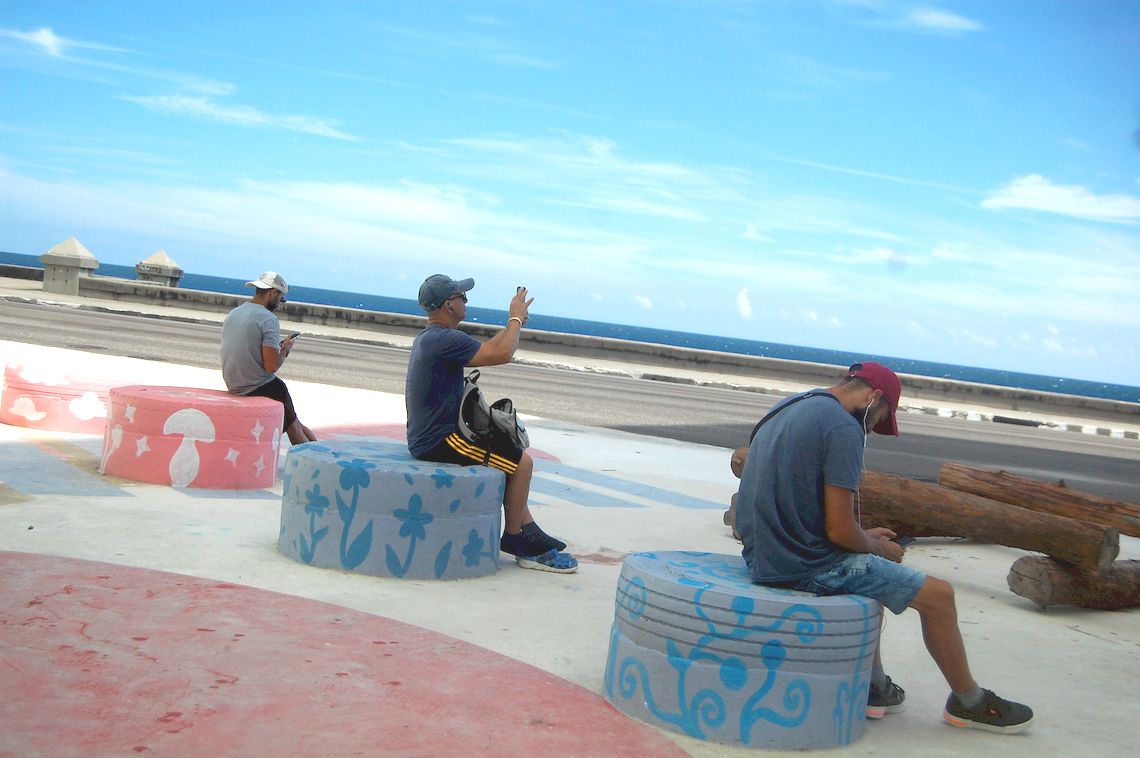
For its part, Ad Urbis, a Cuban group of architects and designers, has also served as a guide and supporter in translating these diagnoses into “minimum viable products”; that is, concrete and achievable proposals for transforming the space.
Javier Agudo summarizes it powerfully: “This is much more than painting or furniture. It’s socialization; it’s reclaiming a space so that people, regardless of their condition, can feel part of and return to inhabiting the city.”
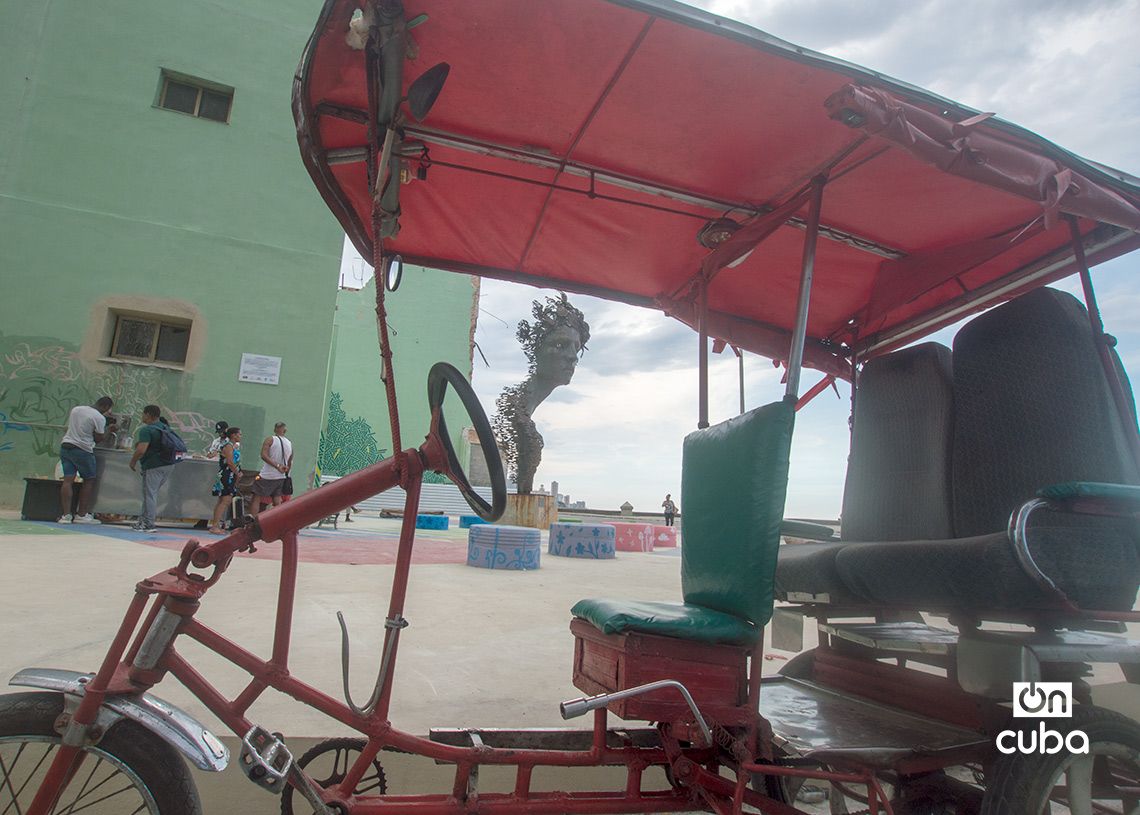
A possible synergy: Italian cooperation and a young and enterprising Cuba
In times when the world and Cuba itself sometimes seem to surrender to collective resignation and the overabundance of problems, many of them unsolvable, this experience sheds a clear light: international cooperation can be much more than a source of resources.
Thus, it demonstrates its ability to energize knowledge, stimulate participation and, above all, allow youth to take center stage in rethinking and remaking their place in the world.
“Here, Italian cooperation not only finances, but also establishes a creative framework. There are rules, yes, but within them, freedom to create. Young people are not just trained: they are empowered to build,” concludes Aymé Plasencia, who, with patience and affection, has followed every step of the entire cascade of actions. “Thus, cooperation becomes a living force, not an empty mandate.”
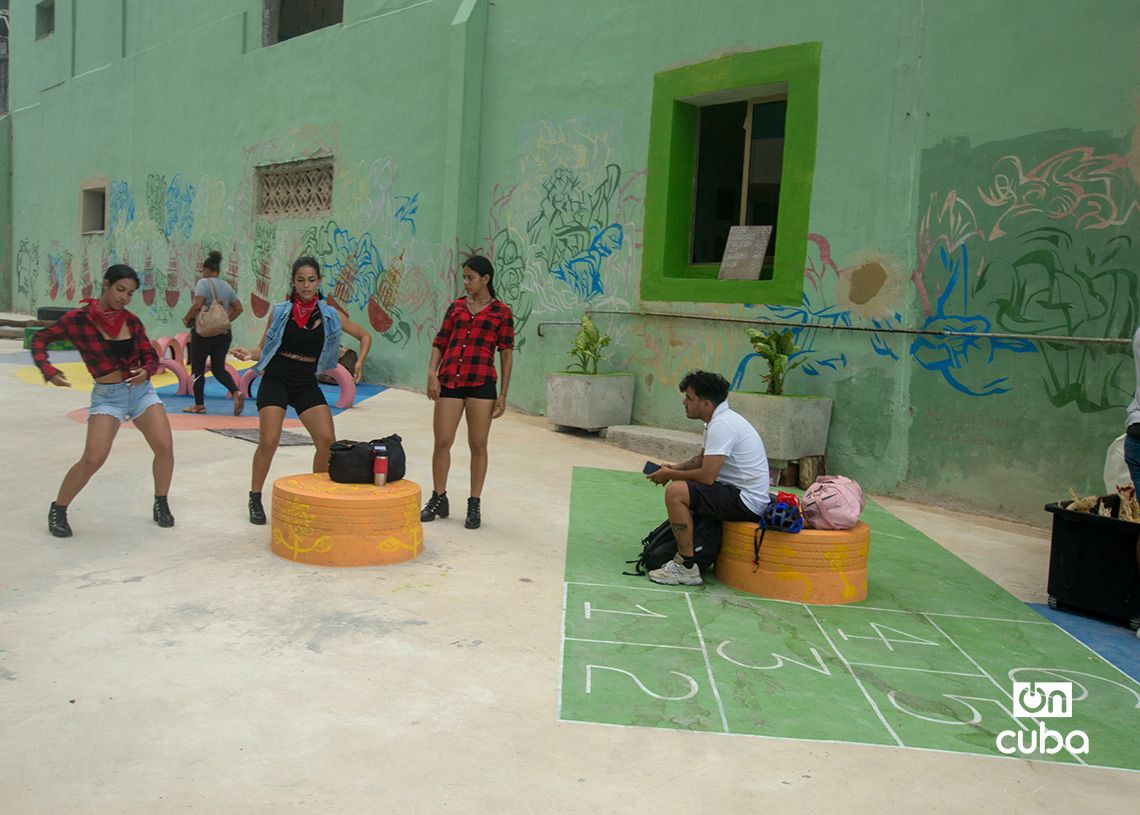
In the midst of the overwhelming Cuban reality, with its full-throttle economic and social crisis, the last word is the reflection of this official and sociologist, who seems to summarize and prioritize in a single sentence all the collective efforts, often against the current.
“The most important thing is that there are committed people who think about this country and want to change its reality for the better. That’s our greatest asset.”
